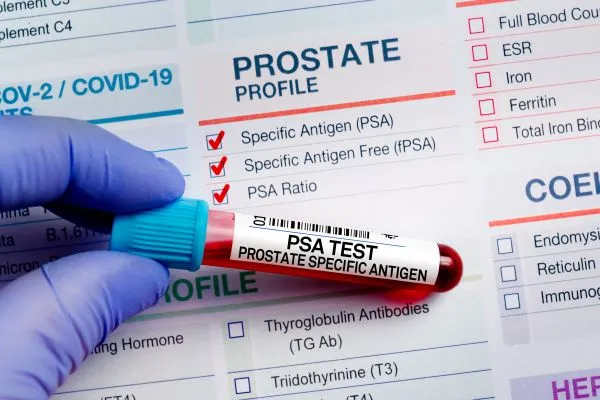Here’s how to connect screens and diagnostic tests with medically appropriate dx.
There are a lot of moving parts for you to work through when your oncologist orders a prostate specific antigen (PSA) test on a patient. First, you have to determine the purpose of the test: Is the provider ordering it as a screening for an asymptomatic patient? Is the patient showing signs and symptoms of prostate cancer? Is the patient receiving treatment for an existing prostate cancer diagnosis? Or is the patient being rechecked for PSA levels after treatment for the condition has ended?
Then, and only then, can you determine the correct ICD-10-CM code to determine medical necessity for the condition. So it’s a small wonder that PSA test coding has given rise to several myths throughout the years — myths that this guide will help you dispel once and for all.
Myth 1: You Should Only Use G0103 for Medicare Patients With Prostate Cancer
Reality: This myth is partially true. Medicare beneficiaries over 50 years of age are allowed a screening PSA and digital rectal exam to check for prostate cancer every 12 months. In these situations, you’ll report HCPCS Level II code G0102 (Prostate cancer screening; digital rectal examination) or G0103 (… prostate specific antigen test (PSA)).
However, G0103 describes a preventive medicine screening for prostate cancer, and should only be used for a patient who has never received a prostate cancer diagnosis and who is not showing any signs or symptoms such as an enlarged prostate (which your provider may refer to as benign prostatic hyperplasia, or BPH), elevated PSA levels, or other symptoms or signs that may point toward prostate cancer.
To use the code correctly, you will need to check the provider’s notes to make sure the patient does not exhibit any of these prostate symptoms or other urological conditions. And you’ll need to use the correct ICD-10-CM code to established medical necessity for the test.
More on that in a moment.

Myth 2: There Is No Difference Between G0103 and 84152-84154
Reality: Actually, there is a big difference between G0103 and 84152 (Prostate specific antigen (PSA); complexed (direct measurement)), 84153 (... total), and 84154 (... free). Even though all the descriptors state that they are PSA tests, G0103 is a screening test, whereas 84152-84154 describe diagnostic tests.
There’s also a big difference between the diagnostic tests as well, which is also important to know for correct coding. The test you’ll see most often is 84153, which is used to measure the total PSA results. You’ll rarely use 84152, and you will only use 84154 if there is a known PSA elevation. You’ll “code 84152 for the complex portion that is considered bonded to the proteins in the blood,” while “84154 is used to determine the 10 percent that is not bound to the protein they use for the 84152 procedure,” says Becky Boone, CPC, CUC, CPMA, senior urology surgery coder at The Coding Network, LLC in Columbia, Mo.
Myth 3: ICD-10-CM Code Choices Aren’t Critical When Establishing PSA Test Medical Necessity
Reality: Quite the opposite is true regarding this myth. “When the test is performed for diagnostic purposes, valid diagnoses for coverage may range from a known condition to determine the status of the disease or for various signs and symptoms,” says Kelly C. Loya, CPC-I, CHC, CPhT, CRMA, associate partner, Pinnacle Enterprise Risk Consulting Services LLC, Centennial, Colorado.
Among those diagnoses that justify medical necessity for 84152-84154 are sign and symptom codes such as:
When the provider uses these codes, you can show that the PSA test is being used to “assist in the decision-making process for diagnosing prostate cancer,” according to the Medicare National Coverage Determinations (NCD) Coding Policy Manual (Source: NCD Coding Policy Manual, found at >www.cms.gov/medicare-coverage-database/view/ncd. aspx?ncdid=152&ncdver=1).
“PSA also serves as a marker in following the progress of most prostate tumors once a diagnosis has been established. This test is also an aid in the management of prostate cancer patients and in detecting metastatic or persistent disease in patients following treatment,” the NCD Coding Policy Manual continues. This means other acceptable codes for accompanying 84152-84154 would be codes such as:

If your provider orders a diagnostic PSA test for a patient who has successfully undergone treatment for prostate cancer, and whose cancer is now in remission, you should not use the C61 diagnosis. Instead, you should report Z85.46 (Personal history of malignant neoplasm of prostate).
And if the oncologist doesn’t document any signs, symptoms, or conditions, but does indicate he is ordering the test as a screening, you’ll link ICD-10-CM code Z12.5 (Encounter for screening for malignant neoplasm of prostate) to G0103.
Remember: Medicare will pay for an annual PSA screening test providing you report Z12.5 alone to support the lab order. If you do report another diagnosis code with the G0103, Medicare and payers following Medicare rules may deny it.
For the most recent list of Medicare-covered ICD-10-CM codes that can accompany PSA tests, consult the NCD Coding Policy Manual. It is important to note that coverage allowances in private payer medical policies often vary from Medicare coverage requirements.
